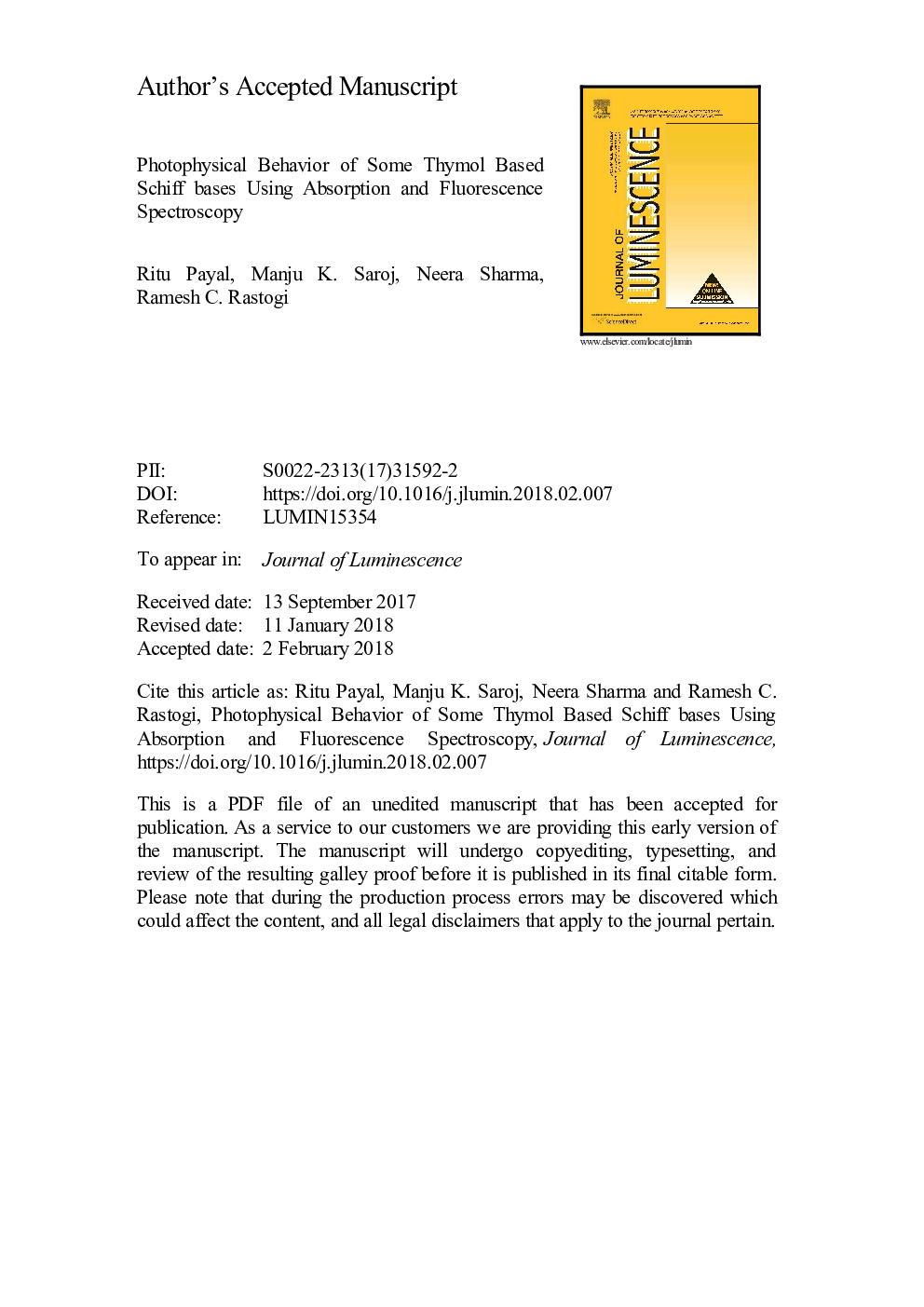| Article ID | Journal | Published Year | Pages | File Type |
|---|---|---|---|---|
| 7840102 | Journal of Luminescence | 2018 | 30 Pages |
Abstract
The absorption and fluorescence spectra of some biologically active thymol based Schiff bases have been studied at room temperature in a series of solvents of varying polarity. The solvent effect on the spectral properties of Schiff bases has been analyzed using Reichardt and Kawski equations and Kamlet-Taft and Catálan multi-parametric solvent polarity scales. The substituents and the solvents strongly influence the excited state behavior of these molecules owing to different electronic arrangements. The excited state dipole moments ( μe/μg and Îμ) of these molecules have been calculated using solvatochromic shift methods based on bulk solvent polarity functions f (ε,n) and Ï (ε,n) and microscopic solvent polarity parameter ETN, respectively. The increase in excited state dipole moments (μe) indicates a more polar excited state and intramolecular charge transfer (ICT) characteristics of these molecules. The molecular orbitals (HOMO-1, HOMO, LUMO and LUMO+â¯1) and molecular electrostatic potential (MEP) surfaces have been generated from their optimized geometries using semi-empirical (PM3) calculations to account for electronic excitations and changes in the overall charge distribution of Schiff bases. The Taft and Catalán multi-parametric equations used in the interpretation of the specific solute-solvent interactions reveal that the most important contribution to the solute-solvent interaction in the excited state comes from the hydrogen-bond acceptor capacity of the solvent.
Keywords
Related Topics
Physical Sciences and Engineering
Chemistry
Physical and Theoretical Chemistry
Authors
Ritu Payal, Manju K. Saroj, Neera Sharma, Ramesh C. Rastogi,
